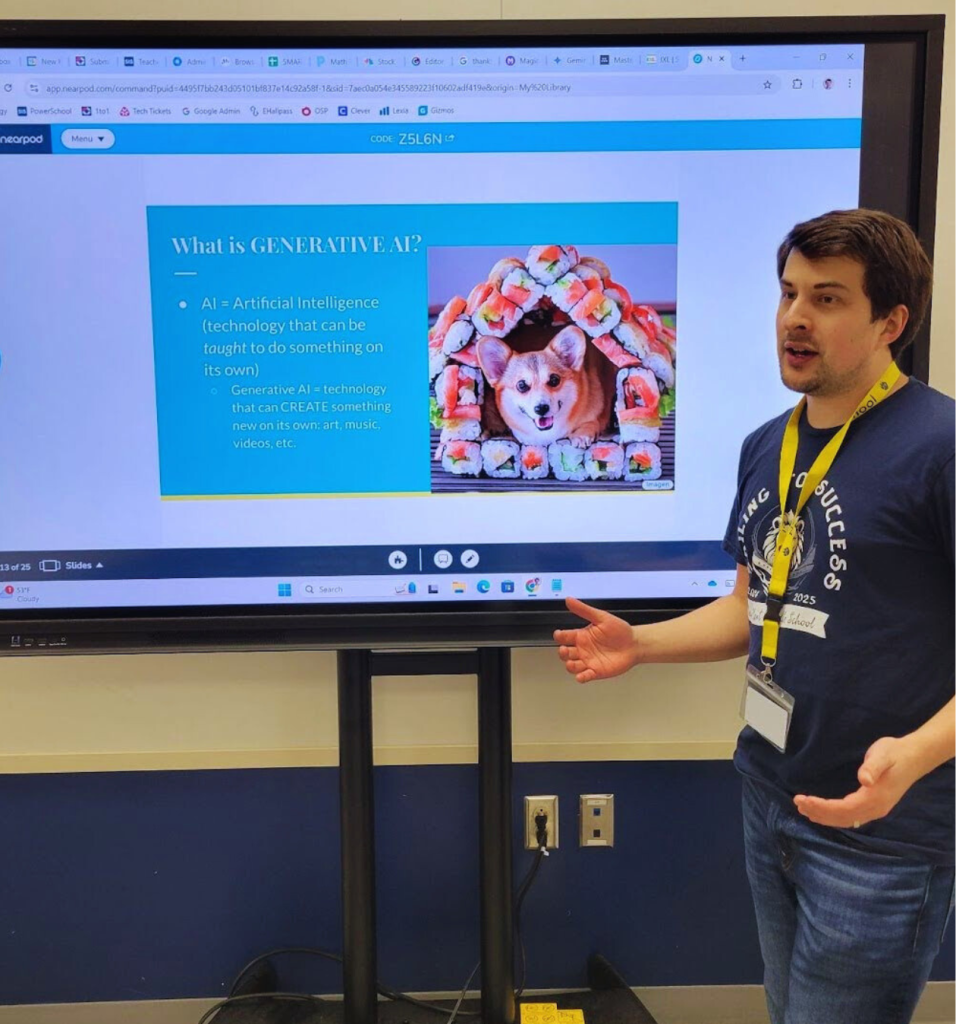In 2022, OpenAI introduced the world to a readily accessible tool called ChatGPT. From that point onward, the technological landscape has changed dramatically with the rapid development of new generative AI platforms such as Flux, Claude, and Gemini. The earliest iterations of generative AI created images that looked fantastical, and it was quite obvious what was real and what was artificially produced. For example, early image generators had a tough time figuring out how to make human hands with all five fingers and body parts that looked proportional. However, in the span of just two short years, images, videos, and audio produced by AI tools look and sound almost exactly like the real thing. Tools such as Google NotebookLM can generate podcast-style narrations that can barely be distinguished from a real radio segment on NPR. With generative AI technology becoming so advanced and widespread, digital literacy skills for students are more critical now than ever.

As an instructional technology professional in New Kent County Public Schools, Benjamin Goldman recognized a need to introduce students to both the positive and negative sides of emerging technologies like generative AI. He felt it was important to plan a lesson during Digital Citizenship week that would bring awareness to students about how this rapidly evolving technology can be used both appropriately and inappropriately by all people who consume or disseminate information. Working with the 8th Grade Civics teachers at New Kent Middle School, Mr. Swanson and Ms. Livingston, they developed a lesson that would accomplish several goals: introduce and explain what generative AI is, discuss its accidental and intentional misuses by various organizations or bad actors, and explore how it can be utilized effectively and appropriately by the general public, especially students.
Over the span of four days, the entire 8th grade class learned about the origins of AI platforms, how they work on a fundamental level, and why they have the potential to be such a tremendous technological leap forward. During these lessons, students encountered examples of current uses of AI and the problems faced by users of early iterations of AI tools. For example, students saw how AI tools have been used to create realistic likenesses and audio of influential public figures in order to spread disinformation. They also learned about errors that large language models (LLMs) can make and that the answers generated by platforms such as ChatGPT aren’t necessarily always reliable due to the nature of the machine learning process.
During the second half of the lesson, Mr. Goldman shifted focus to the positive aspects of generative AI and the benefits it can bring to students. For example, they explored AI as a “study buddy” when reviewing for tests, an “explainer” to help clarify information they learned in class but did not quite understand, and a “modifier” of course materials to bring texts down to their needed reading level. Mr. Goldman wanted to make sure that students knew the lesson was not meant to focus on the negative aspects of this emerging technology; instead, he wanted students to be aware that it can be a powerful tool in the hands of both good and bad actors, which means it is important for them to be aware of how it can be used to both empower or harm them. After all, awareness is an essential element of digital citizenship.
To wrap up the lesson, students in Mr. Swanson and Ms. Livingston’s classes were divided into groups and tasked with the creation of an illustrated poster about appropriate and positive uses of generative AI as school-aged students. Drawing from earlier discussions and examples, students brainstormed ways they could use AI to assist them and then put their ideas to paper in the form of visual illustrations with accompanying written explanations of each of their ideas. By the end of the lesson, students were able to clearly explain positive and negative use cases of generative AI tools, as well as how they can personally benefit from AI tools as students when used appropriately and within frameworks developed by schools or universities.
As educators, it is important for us to make sure that we stay on top of the rapidly changing technology landscape as best we can. Without being aware of these changes ourselves, it is next to impossible to ensure that students learn best practice when using these new technologies and how to proceed with caution when new technologies now have the power to influence the content and information they consume. Many emerging technologies, such as generative AI, can be a force for good, and schools can play an influential role in improving students’ abilities to both use new digital tools and think critically about their use.
Authorship Information
Benjamin Goldman is a Technology Integration Coach for New Kent County Public Schools and primarily serves the district’s middle school. Benjamin is a resident of the Greater Richmond area, and he enjoys exploring cutting edge technology and finding ways to improve learning outcomes from the perspective of an instructional designer.

